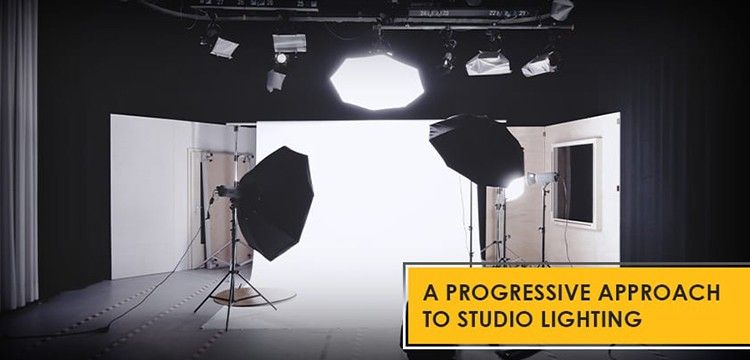A Progressive Approach to Studio Lighting
Studio lighting is an essential part of photography. Fashion, Product, fine art, food, and a few other genres of photography cannot be imagined without studio lighting.


What is studio lighting in photography?
There are many different studio lighting setups used by photographers. From a single light to three lights or even more.
Most of these lighting setups are mainly based on the three-point lighting theory. The three-point studio lighting for photography is basically,
Key light : the main light source.
Fill light : to reduce the shadows/contrast
Separation light: used as hair light background light or both
Even though this is the most used theory, there can be some progressive lighting setups that photographers occasionally use. These progressive setups are nothing but a contemporary approach to studio lighting. However, the goals of studio lighting remain the same.
In this blog, I will discuss a few such artistic studio lighting setups to help you improve your studio lighting. These can be non-conservative or ‘breaking-the-rules’ setups. I believe photography is a combination of art and technique. And sometimes the Art part can be given more weightage to get unique or artistic images. So, what are the three different types of studio lighting?
Progressive ONE
We mostly use a particular setting on the camera when we are shooting in a studio environment. For example, SS: 1/125, A: F8, ISO 100.
We all know that aperture plays a major role while using flash in the studio lighting setup.
But if we alter some settings, we can achieve an interesting result. Refer to the image below,
This image was shot with a single light source. a studio strobe with a standard reflector But with a slightly contemporary mindset.
A typical studio strobe has a flash tube as well as a modeling lamp (continuous light source). With a slower shutter, the continuous light registered on the sensor is more and can be mixed with flash to get an engrossing result, as seen in the picture above.
The camera settings for this image were SS: 1 Sec, A: F5.6, ISO 64
Reducing the shutter speed increases the amount of continuous light hitting the sensor. Flash captured a steady image and continuous light gave the light trails which can be seen in the image above.
So with the same lighting, by just changing the shutter speed you can achieve something extremely distinct, unique, and artistic.
2. Progressive TWO
Whenever we use a single light source, we mostly point the light directly at the subject. And with precision, a single light source gives stunning results. Mostly in portrait photography, one light source can be used to create a lot of drama and mood lighting.
But the same single light source can be used in a completely different manner. Refer to the image below,
This image was shot with a single light source. a studio strobe with a strip box.
Instead of lighting the subject directly with the light source, Light was bounced off the white wall behind. The subject is lit with the bounced light which gives it a very interesting contrast. This is a very different and unique approach to studio lighting for fashion photography.
My camera settings for this image were SS: 1/200s, A: F4, ISO 64
3. Progressive THREE
In the previous two examples, it is seen that a single light source can be used in a different/ unconventional way to create an engrossing result.
Below is one more such example, where a continuous light source is used with a semi-transparent black curtain.
Refer to the image below,
As you can see, the subject is lit from the side more like a kicker or cut light. A semi-transparent curtain is used between the subject and the camera on which the shadow is cast and makes an illusional picture showing more than one face.
This is a very artistic way to use light and can be used for interesting portrait photography or conceptual photography with a deeper meaning.
The camera setting for this image was: SS: 1/80 S, A: F4, ISO 800
Photography is a mixture of art and science, and it depends on the individual how and in what ratio these two parts can be divided to achieve the right kind of results.
As far as I know, when it comes to art, your imagination is the key and the boundary.
As a professional photographer and a photography professor, I would like to advise budding photographers to learn and follow all the fundamental rules in photography. And when you master them, you unlearn by breaking these rules of different types of lighting in a photography studio and creating your own style to bring out your vivid vision in the photographs


CATEGORIES
Are you aspiring to become a proficient Photography professional?
Look no further; we are committed to nurturing the potential of young minds. Are you ready to enhance your skills?

